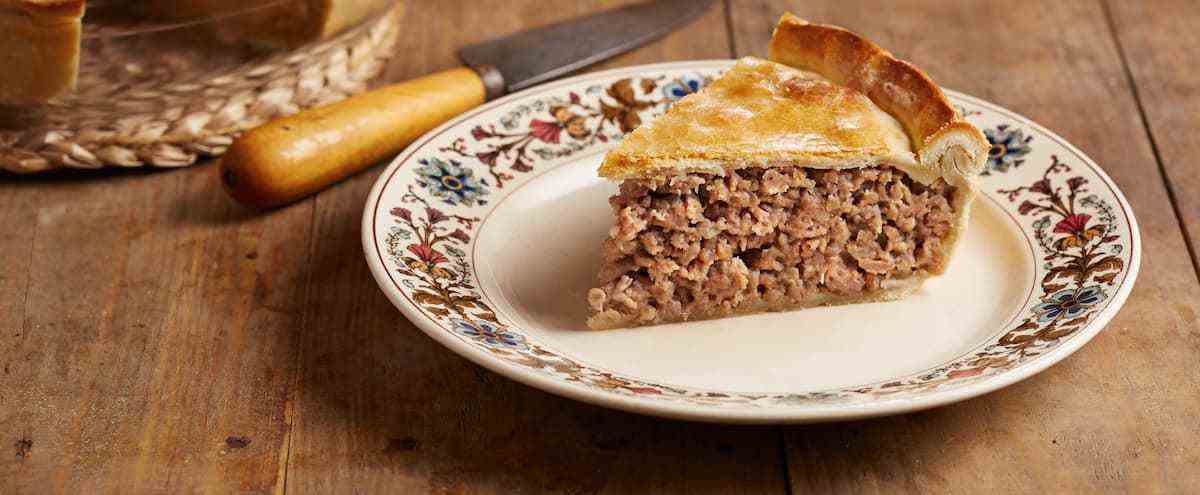If there is a dish in our culinary repertoire that provokes discussion or arouses incomprehension and questioning, it is the tourtière, the six-pâté (cipâte) or the cipaille (sea pie) and other spellings. Let’s try to elucidate the mystery a little, without however guaranteeing to do so to everyone’s satisfaction!
First step: consensus. Regardless of the term used, it is a dish associated with the holiday season; secondly, this dish is one of meat cooked in a crust.
From here, the interpretations get tougher and more tangled!
Let’s start with the simplest: tourtière and meat pie. Depending on where you come from, the second recipe is associated with a dish of minced meat between two layers. On the other hand, the first is identified with three specific regions that are Saguenay–Lac-Saint-Jean, Charlevoix and Gaspésie–Bas-du-Fleuve and concerns preparations of domestic and/or wild meat cubes with or without potatoes. .
Photos from Art Gallery of Ontario
A mixture of domestic meats and game, such as moose, whose hunting we see in this canvas by Cornelius Krieghoff dating from 1860, is part of the recipe for Gaspé cipaille, akin to Hannah Glasse’s Yorkshire Christmas Pie.
They are pies and pie can refer to a whole variety of pastry dishes. One certainty however, the preparations with potatoes date at best from the 19e century.
Some have associated the tourtière with the settlers of the 17e century who prepared pâtés of pies (that is to say the carrier pigeon, now extinct) in pies, a cooking utensil. But there is no relationship between the name of the bird and the dish referred to as the pie or tourtière. The transposition of the term utensil to that of dish is not, however, specifically Quebecois; local cuisine in France also has its pies.
Middle Ages
The pie is a culinary preparation that dates back to the Middle Ages in France and England, under the name of “magpie“.
Hannah Glasse, one of the most important English authors of the 18e century, in 1747 offered a dish called “Cheshire pork pie for the sea“which will quickly become”sea pie” according to Oxford Dictionary.
This dish is prepared in a crust with repeated rows of boiled salt pork covered with a layer of potatoes.
The American Amelia Simmons will also offer a recipe for it in her collection 50 years later, without including potatoes. Note that none of the recipes include fish.
However, it is a preparation for sailors…
Phonetic
Which brings us to the Quebec cipaille. Some authors see it as a linguistic transformation of thesea pieEnglish while others have found a recipe for “sea piewith six layers of pasta!
The linguistic shift could be explained by phonetics, whether it is exchanges between American or British sailors and coastal residents or by exchanges between Quebec migrants from New England textile factories and their families. stayed behind.
However, we must not lose sight of this other recipe from Hannah Glasse concerning the Yorkshire Christmas Piea recipe that combines cubes of domestic and wild meat, seasoned with mace, nutmeg, clove, pepper and salt and which is similar to that of Gaspé cipaille.
The “sea pie” at 19e century
It exists in the English-speaking world from the 19e century several versions of sea pie but none in the French-speaking world. For example, British and American authors Isabella Beeton and Sarah Hale will each offer a version. The following is taken from kitchen dictionary published by Cassell’s at the end of the 19e century and recalls one of the versions adopted here.
Translation
“Sea pie” is literally a dish made from leftovers and therefore qualifies as an economical family dish. Nevertheless, it is best when fresh meats are used. Add as much seasoned meat as needed or, for a higher quality preparation, have a blanched and cut-up chicken with a few slices of corned beef. The dough is prepared in a proportion of half a pound of butter or fat or crumbled tallow to one of flour. Butter your dish and place the crust on it. Lay a layer of meat seasoned with pepper and finely chopped onions and cover with a layer of dough. Fill the dish with alternating layers of meat and dough. Pour broth or water, seal your preparation and cook it. Serve very hot. Be careful not to burn it. The cooking time for an average dish is 3 to 4 hours, and this preparation will provide 6 to 8 servings.
Photo from Sea Pie – Cassell’s Dictionary of Cookery, London, Paris & New York, 1892, Cassell, Petter & Galpin, p. 846.


